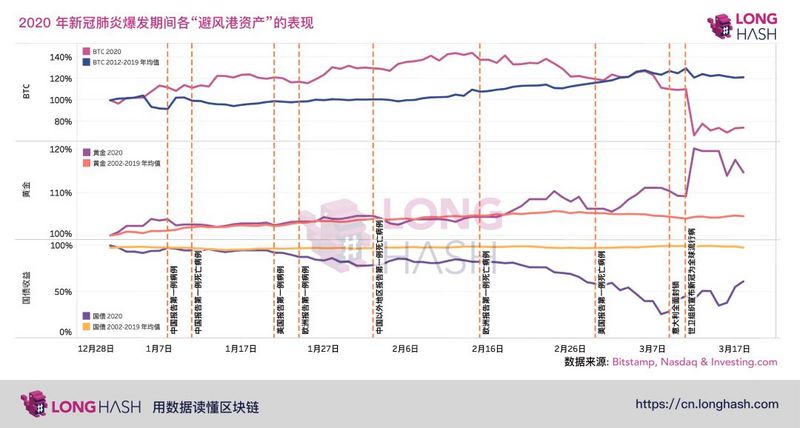Viewpoint | Bitcoin vs. Treasury Bonds: New Treasury Rage, Only U.S. Treasury Bonds Successfully Called "Haven"
Source: Longhash
Editor's Note: The original title was "Only U.S. Treasuries successfully docked in the" safe harbor "under the new crown
The upgrade of the new coronavirus to a global epidemic has caused widespread panic and financial turmoil. The US stock market has experienced its worst crash since 2008, after which the crisis quickly spread to financial markets around the world.

- USDT's 8-day additional issuance record: an additional 540 million was issued. Where did the money go?
- Short-term market volatility is unstable, risk aversion is the best policy
- Former Chairman of the United States CFTC: The United States should consider the central bank's digital currency and Libra as good reasons to consider digital dollars
Bitcoin has always been praised as a substitute for gold, and in times of crisis, gold is generally considered a safe haven asset. But in the current crisis, it is clear that Bitcoin is not a safe haven asset. In this article, we will compare the performance of Bitcoin and other safe-haven assets such as gold and 10-year US Treasuries.
We collected data from January 1st to March 17th, and plotted the following chart based on important milestones during the period.

Compared to the same period in the past eight years, Bitcoin's movement during the outbreak was extraordinary. Before February 15th, the deterioration of China's epidemic seemed to be related to the sharp increase in the price of Bitcoin. After February 15, new cases in China began to decline, and the premium situation reversed within two weeks.
After March 7, the price of bitcoin fell below normal levels, indicating that concerns about the spread of the virus in the United States still triggered panic selling.
This is in stark contrast to the virus's previous turmoil in China, which may also indicate that investors in China once considered Bitcoin as a safe haven asset, but the United States did not. Of course, this guess is hard to confirm.
We also looked at two other traditional safe-haven assets, gold and 10-year U.S. Treasury bonds, and used older data (2002-2019).
On the gold side, the situation is completely the opposite of Bitcoin. During the outbreak in China, the price of gold did not differ from that before February 15. But after that, the face of the disk reversed greatly, exceeding expectations. This shows that the people of the two countries have different views on gold: American investors seem to prefer gold as a safe haven asset, while Chinese investors are not.
One thing we can be sure of is that during the outbreak, the safe haven properties of government bonds were most obvious. Note that the chart shows its yield, and the yield of government bonds is inversely proportional to its price. When the first confirmed case was reported in the United States, the yield on U.S. Treasury bonds began to decline, and continued until the sharp deterioration of the European epidemic on March 7.
We will continue to update Blocking; if you have any questions or suggestions, please contact us!
Was this article helpful?
93 out of 132 found this helpful
Related articles
- The Maker Foundation hands over contract control to the community. Is the "centralization" hat off?
- The price has plummeted and the computing power has plummeted. The data tells you whether BTC miners have sold off?
- Google extension impersonates Ledger official identity, 1.4 million XRP have been stolen
- "Blockchain +" Practice of Shandong University: "Digital Safe" Eliminates Complexity and Simplifies Government Affairs System
- Watch | What are the similarities and differences between the Bank of England's digital currency plan to "abandon" blockchain and China
- Video: Exploration, Application and Prospect of Blockchain in Digital Marketing (Part 2)
- The Mentougou case triggered a panic of BTC selling. Is the market overreacting?






